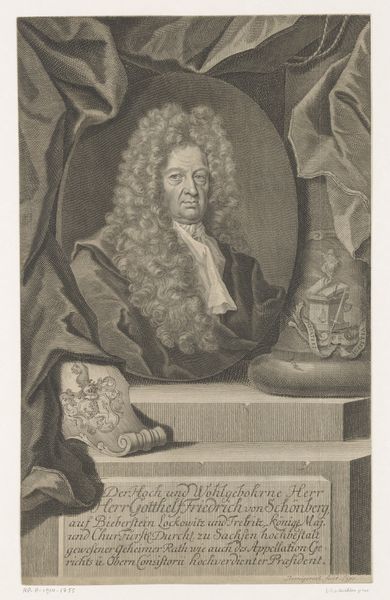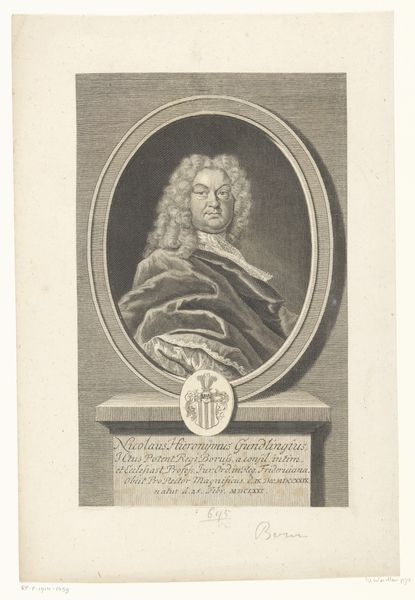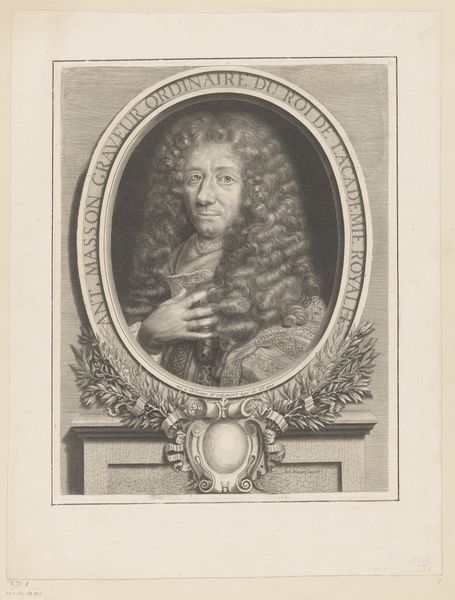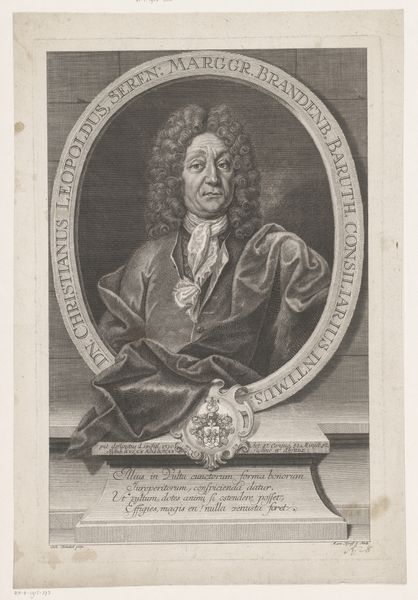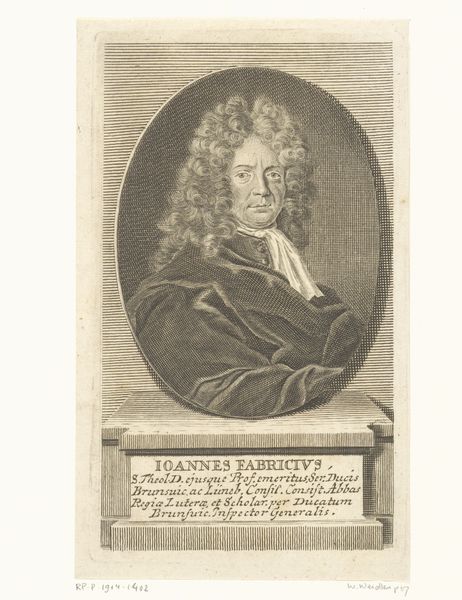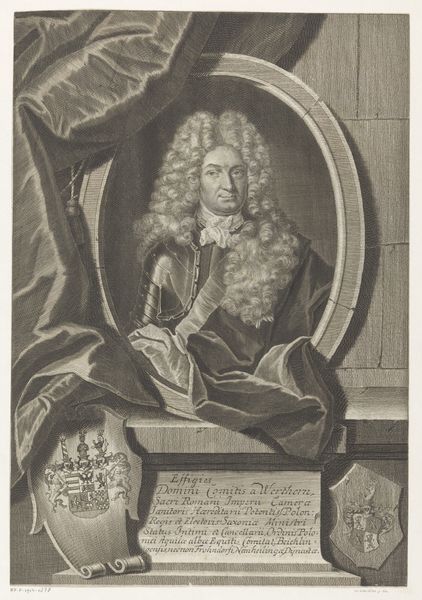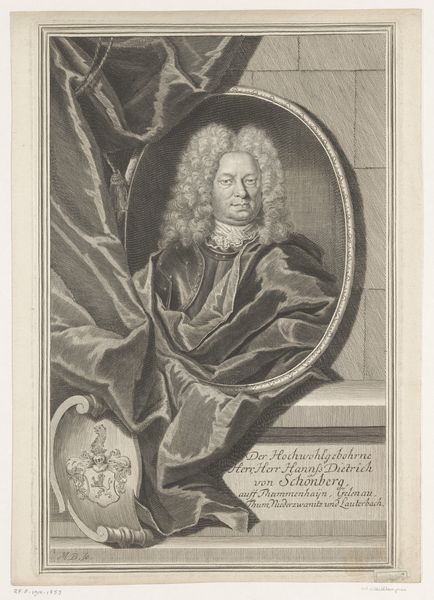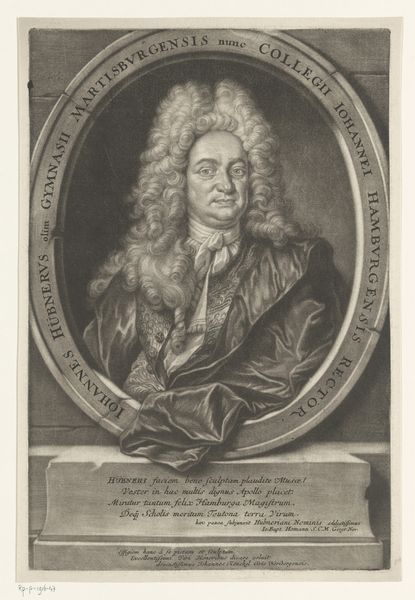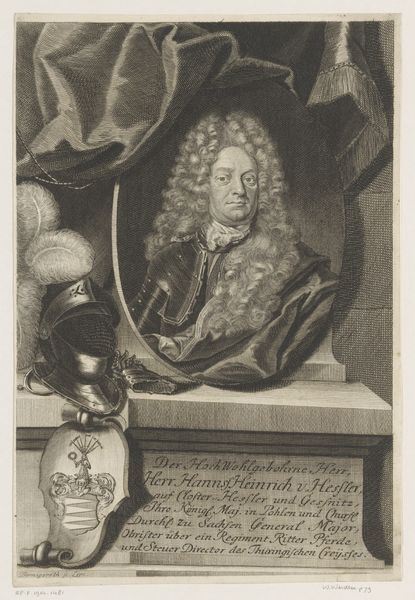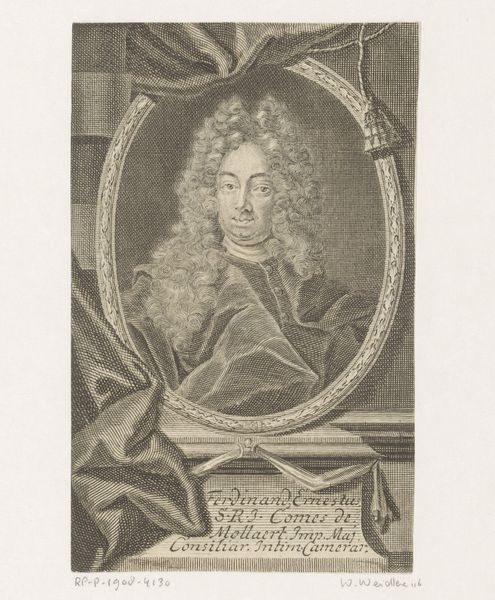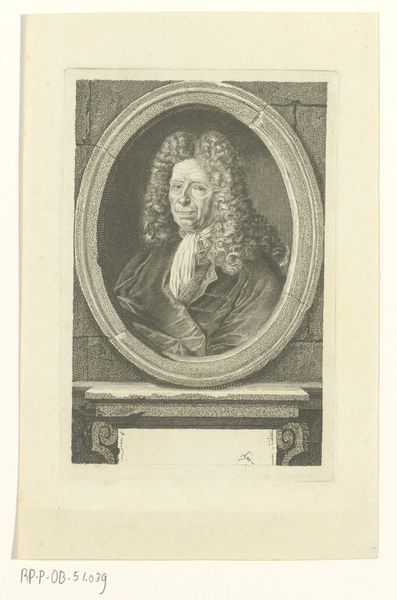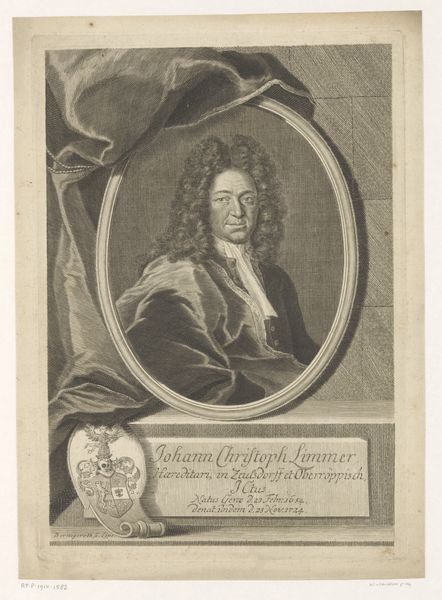
metal, engraving
#
baroque
#
metal
#
engraving
Dimensions: height 189 mm, width 159 mm
Copyright: Rijks Museum: Open Domain
Editor: This is a portrait of Johann Sigismund von Haunold by Martin Bernigeroth, made sometime between 1710 and 1733. It's an engraving, so done on metal. I'm really struck by how much information it packs in—the inscription, the coat of arms, not to mention that enormous wig. What do you see when you look at this, particularly regarding the function of portraiture at this time? Curator: Well, portraits during the Baroque period weren't just about capturing a likeness. They were carefully constructed statements of social status and power. The oversized wig, the elaborate frame, even the coat of arms—they all communicate Johann Sigismund von Haunold’s position within society. Editor: So, it's about crafting a public image? Like curated content in today’s world? Curator: Precisely. Consider the institution of portraiture itself. Who was able to afford such a commission? Who had the power to decide how they were represented? The image subtly reinforces the social hierarchy of the time. Think about how these images would circulate - were they just for the family, or displayed more publicly? Editor: The text says he was a senator for 19 years... it's almost like a visual resume! It really is a window into how status was performed and broadcast in the 18th century. Curator: Exactly! And the engraver, Bernigeroth, played a key role in disseminating that message. By producing this print, the portrait was no longer confined to a single viewing space; it could be distributed, replicated, and consumed by a wider audience. How does that change our understanding of its original purpose? Editor: I never really thought about that, how prints changed the distribution of portraits. Thanks! Curator: It reveals how deeply intertwined art, politics, and social structures were, even centuries ago. It has been insightful reflecting with you on that today.
Comments
No comments
Be the first to comment and join the conversation on the ultimate creative platform.
